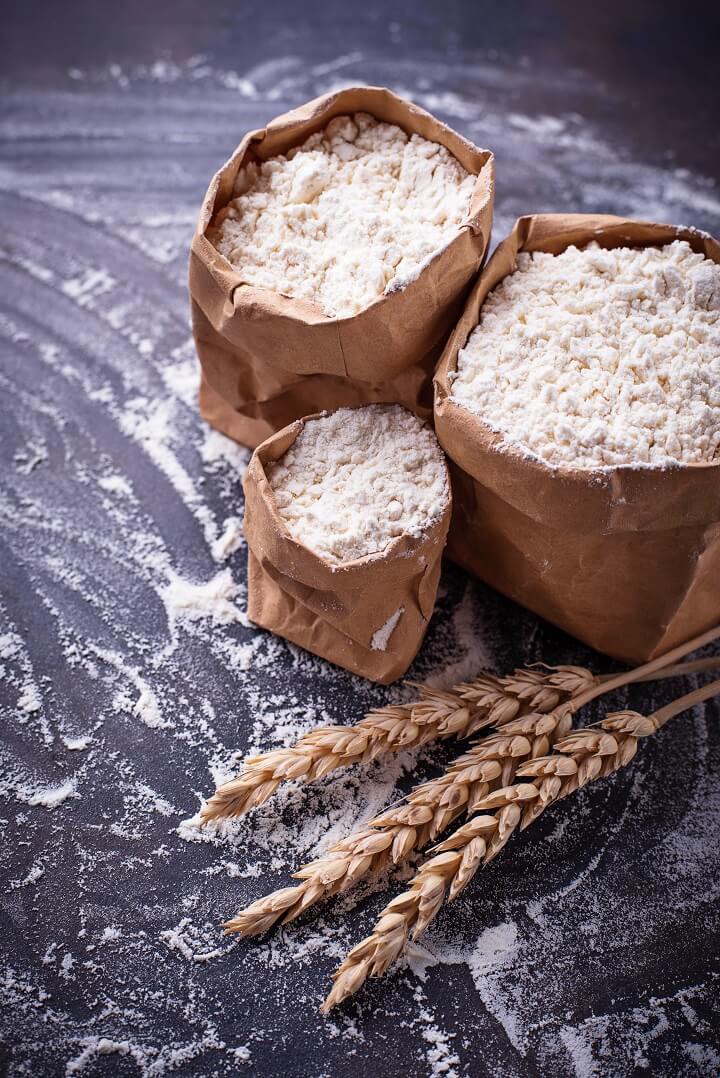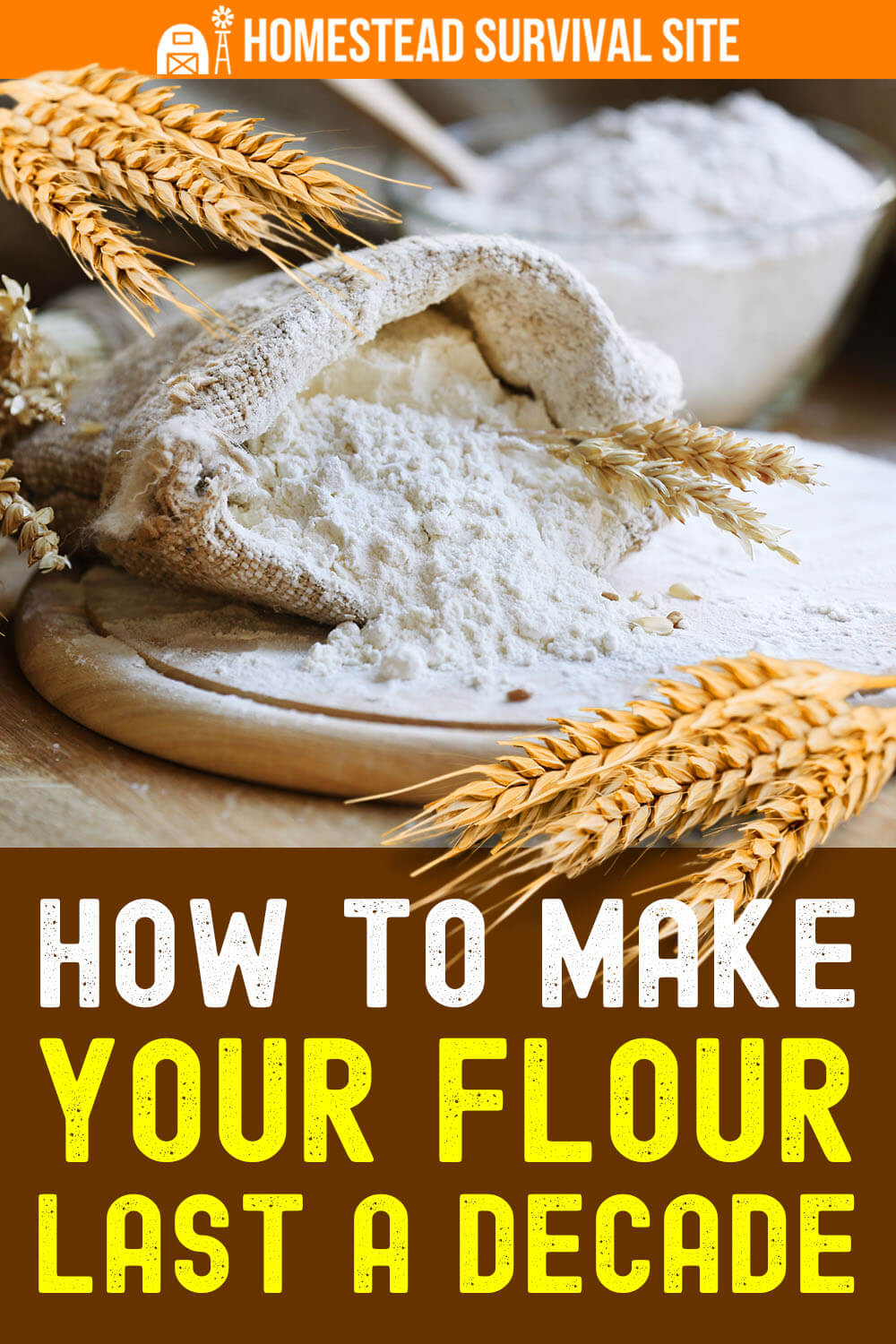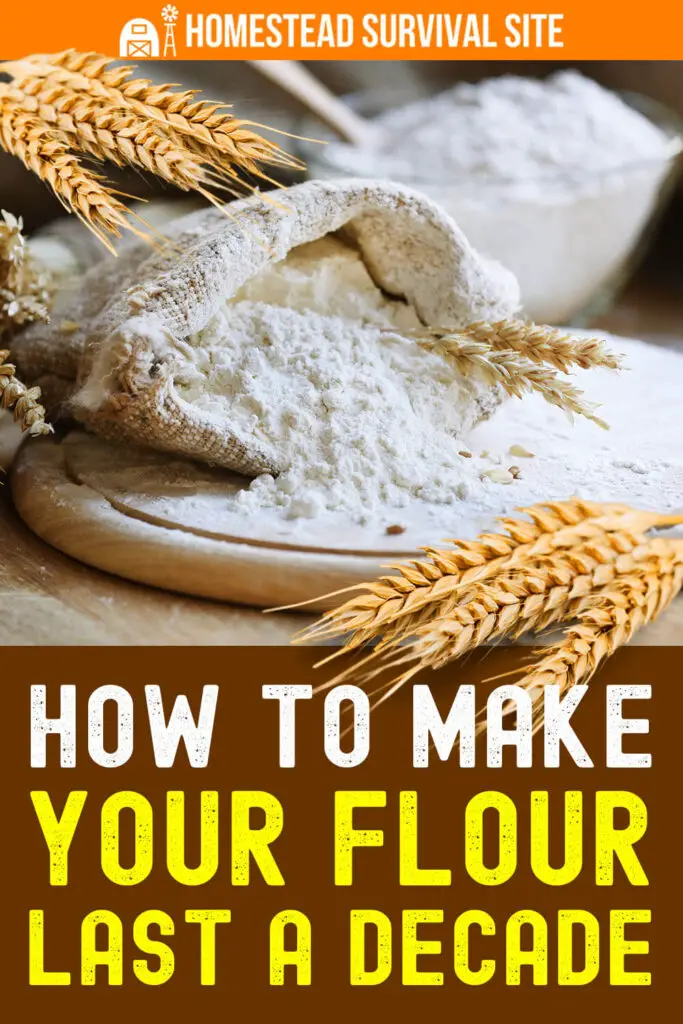Estimated reading time: 6 minutes
Flour is one of the basic foods that everyone should have in their stockpile. Not only can it be turned into amazing food, but it's also an essential food that can sustain someone for a long time.
As homesteaders, many of us have a lot of flour on hand. However, not all of us are storing it correctly for the long term. A good stockpile involves using the older items first and then adding newly purchased items to the back of the stock. While this is common practice, it is still possible to end up with a lot of either infested or inedible flour.
Flour tends to go bad when it is not stored properly. Placing bags of flour in a damp area can ruin the flour with mold growth and bad smells. Flour sold in stores will have the best-by date on the package. However, you can still consume flour that has gone past that date if it looks and smells okay.
Rancid flour is best detected by smelling the contents of the flour bin. Any flour that has gone rancid will smell sour and may even have a different color and texture than normal flour.
Some homesteaders have also encountered weevils, also known as flour bugs, that end up infesting flours, grains, and rice. Weevils appear in flour because they were already in the bag when you bought it.
Female weevils lay eggs in the grain before it is milled and processed. The eggs can survive the field-to-table process and may hatch in the sealed flour under the right conditions. Flours and grains that are less refined will have a higher chance of containing live weevils due to the limited amount of processing involved.
Fortunately, you can make your flour last up to a decade or longer using these tried-and-true techniques. You may already be doing some of them, while others could be newer ideas that you haven't thought of yet.
Want to save this post for later? Click Here to Pin It On Pinterest!
Airtight Containers
Most of us use airtight containers to store flour in large quantities since air is a top culprit in spoiling food. Some of these containers could include plastic Tupperware that fits a shelf to large 50-pound bins and food-grade plastic buckets.
No matter what container you use, it is important to ensure that there is no chance of air making its way into the container that could spoil the flour. Make sure that the lid is tight-fitting and that the container has no breaks, cracks, or integrity issues.
Store flour in airtight containers located in a cool and dry area for the best shelf life. Flour stored in this manner can easily last up to 2 years in the proper conditions.
Vacuum Sealed
Many homesteaders have access to a vacuum sealer, which can help elongate the shelf life of flour. While airtight containers work for flour storage, vacuum sealing goes one step further in removing any access air from the container itself.
You can easily store flour in vacuum-sealed bags or jars using a small vacuum sealer. Instead of placing flour directly into the vacuum seal bag, make sure to put it in another bag so that the flour isn’t sucked up into the vacuum sealer itself.
Plastic vacuum-sealed bags are easy to store but maybe a bit more prone to dampness. Storing flour in vacuum-sealed glass jars such as mason canning jars is a great way to protect the flour from both the elements and any excess air. Vacuum sealed flour usually lasts at least 2 years but up to 5 years in a shelf-stable environment that is dry and cool.
Freezer
Some homesteaders choose to freeze their flour in order to make it last longer. You can also temporarily freeze the flour for 48 hours after bringing it home to help kill off any weevil eggs lurking in the flour.
Freezers technically can prolong the shelf life of flour but would always need some kind of power source. Many homesteaders choosing to live off the grid may not want to spend precious freezer space on flour for years on end.

When choosing to freeze flour, it is best to let the flour come to room temperature before baking. Frozen flour should act much like frozen coffee grinds in that it is easy to scoop and handle straight from the freezer. However, it is best to bring the flour to room temp before baking, so you don't waste ingredients.
Frozen flour can last at least 2 years, while some believe it can last indefinitely in its frozen state. No matter how long you freeze flour, be sure to do so in small batches in airtight containers so that the continuous opening of the freezer won't impact the flour longevity.
Mylar Bags with Oxygen Absorbers
One of the best ways to store flour for an extended amount of time is to use mylar bags with added oxygen absorbers. Mylar bags are a special kind of bag that you've probably seen in stores. They are made from a metallic material and are often used to store MREs. Mylar bags stand up great to moisture and oxygen but may have a bit more trouble lasting if in a rodent-infested area.
Adding oxygen absorbers to a mylar bag helps boost the longevity of the food even further. These absorbers remove oxygen within the bag and can help flour last up to 10-15 years on the shelf. It is vital to use the right amount of oxygen absorbers for the kind of food you are using and use any open packages of absorbers quickly.
Diatomaceous Earth
Many of us who raise poultry know a thing or two about diatomaceous earth. This critical farm supplement is made up of tiny fossils that help prevent mites and insects and can be added to flour to help prolong its shelf life. You can purchase industrial and food-grade diatomaceous earth with the food-grade option being the obvious choice for flour.
The most important thing to remember when using diatomaceous earth is that a little goes a long way. In fact, you only need to use about half of a cup for 25 pounds of food. Many homesteaders choose to use this for their large flour storage in 5-gallon buckets or bins to minimize the chances of weevils hatching.
It is important to take all of these tips on long term flour storage and use them at your own discretion. Always check your flour to ensure that it looks and smells right and is free from the presence of weevils. Inspect the flour thoroughly before using even years in the future.
Also, note that different kinds of flour may have different storage lifespans depending on the ingredients. Consider all of these tips when trying to make your flour last up to a decade or longer.
Like this post? Don't Forget to Pin It On Pinterest!














hi, I am reading that flour actually needs some oxygen, to stay good?
Or is that a misconception?
Love to make my own flour using local food in the village using appropriate technology
Not mentioned is bay leaves. If you atr transferring flour from bag to preferred container place 1 or 2 bay leaves amid the flour. I learned this from my mum & it works. I still do this. Those mites do NOT like bay leaves.
I am vacuum sealing 5 pounds of whole wheat flour, right in the paper bag. If you get the right size vac bags, it makes it easier.
I suggest oven canning. Put in mason jars, heat oven to *250, bake for 30 mins and seal. I’ve done this with bisquits and even after 17 years they were STILL buttery and tasty!